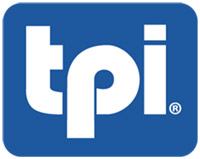Alpha Gum
Alpha Gum
Alpha Gum is a one to one replacement for guar gum that is made by Thymly Products, Inc. It is predominantly flax and sugar which makes it easily recognizable to consumers and helps manufacturers clean up their labels.
Flax is actually being called one of the most powerful plant foods on the planet. There’s some evidence it may help reduce your risk of heart disease, cancer, stroke, and diabetes. All of these health benefits make it extremely appealing to consumers. Although flaxseed contains all sorts of healthy components, it owes its primary healthy reputation to three of them:
Omega-3 essential fatty acids – “good” fats that have been shown to have heart-healthy effects. Each tablespoon of ground flaxseed contains about 1.8 grams of plant omega-3s.
Lignans – which have both plant estrogen and antioxidant qualities. Flaxseed contains 75 to 800 times more lignans than other plant foods.
Fiber – Flaxseed contains both the soluble and insoluble types.
Guar Gum
For thousands of years, farmers in India and elsewhere have harvested guar beans, the source of guar gum, for both human consumption and cattle feed. Guar gum, also called guaran, is a galactomannan. It is primarily the ground endosperm of guar beans. Guar gum is extracted from the guar bean. The guar seeds are de-husked, milled and screened to obtain the guar gum. It is typically produced as a free flowing, pale, off-white colored, coarse to fine ground powder. It is a member of a group of products known as starches, gums, and emulsifiers. Chemically, guar gum is a polysaccharide composed of the sugars galactose and mannose.
Since the 1950s, the gum has been used to make processed foods, in which it acts as a thickener and prevents the formation of ice crystals which are essential for products like creamy ice cream.
Clean Label
Marketing requests for “clean label” formulations are steadily increasing, although no clear legal definition of clean label currently exists. The clean label momentum is driven by the success of retailers like Whole Foods, chef-inspired formulations that often avoid technical ingredients and marketing campaigns that tout kitchen-friendly ingredients. Consumers want foods that are convenient, fresh, great-tasting and cost effective. If you add “clean label” to that list of demands, the challenge for the food developer becomes more daunting. Ingredients like guar gum are not considered as top choice for manufacturers who are trying to clean up their labels because shoppers do not easily recognize guar gum as a natural ingredient or do not consider it something they would keep stocked in their homes.
Hydrofracking
Due to hydraulic fracturing, also known as hydrofracking, a rapidly expanding natural gas extraction technique Guar Gum has become know for its erratic cost changes making it a very unstable ingredient for commericial bakers.
Each hydrofracking well uses 10 tons of guar gum, and 35,000 new hydrofracking wells were drilled last year in the United States alone, dramatically increasing demand for guar, and causing a spike in its price. As a result, guar bean farmers in India and Pakistan are smiling all the way to the bank, while food manufacturers are asking their own bean counters for a second opinion.
In hydrofracking, guar gum is used to thicken water, which allows it to move grains of sand underground more effectively than water alone would.

